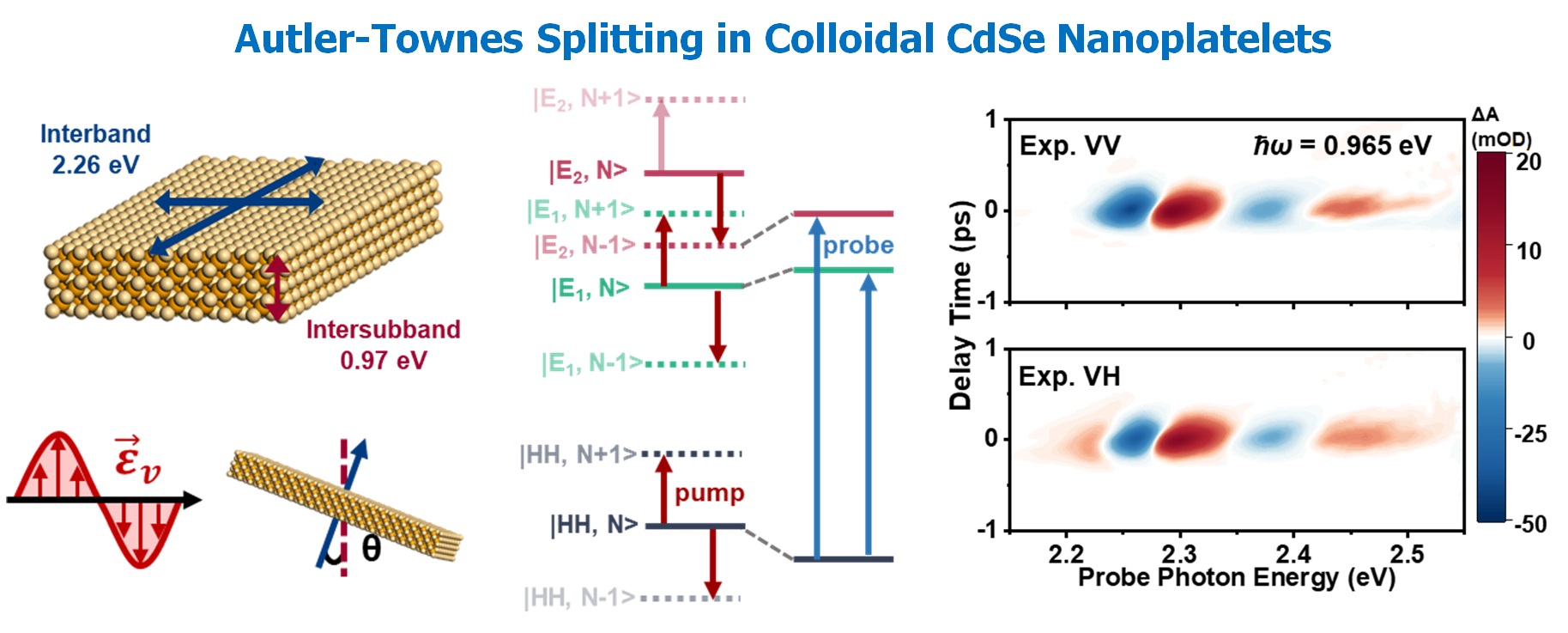Autler-Townes splitting (ATS) is an important phenomenon arising from coherent interaction between a light field and a three-level system, which has been developed as a powerful tool for quantum control and quantum information processing. Traditionally, ATS is broadly studied in atoms and molecules, but the relatively weak transition dipoles of atoms and molecules lead to a small magnitude of energy splitting.
Lately, quantum-confined semiconductor materials, such as quantum wells (QWs) and dots (QDs), have been studied due to their significantly stronger light-matter interaction. However, these solid-state systems tend to have broad lineshapes resulting from electron-phonon coupling and energetic disorder. Therefore, cryogenic temperatures are often required to suppress the linewidth broadening for the study of ATS.

Strong Autler-Townes splitting with anomalous spectral lineshapes is observed in colloidal nanoplatelets driven by near-infrared femtosecond laser pulses (Image by LI Yuxuan)
Writing in Science Advances, Prof. WU Kaifeng and his coworkers from the Dalian Institute of Chemical Physics (DICP) of the Chinese Academy of Sciences (CAS) observed ATS in colloidal semiconductor nanoplatelets driven by near-infrared pulses under ambient conditions. These nanoplatelets are colloidal analogues of QWs, for which the strong, atomically-precise quantum confinement in the thickness dimension results in interband and intersubband transitions in the visible and NIR regions, respectively. The mutually orthogonal dipoles of these two transitions allowed the researchers to use linearly-polarized, NIR pulses to drive the intersubband transition and to use cross-polarized, visible pulses to observe the splitting of the interband transition. Therefore, the ATS phenomenon exhibited a strong linear dichroism. The determined Autler-Townes splitting energy as large as 26 meV was among the strongest reported for various types of atomic, molecular and solid-state systems.
Moreover, the researchers observed anomalous spectral lineshapes when the nanoplatelets were driven from tilted incident angles. This anomaly arose from a competition between interband and intersubband drivings, which were unprecedented in prior optical Stark effect studies but were nevertheless quantitatively captured by the developed dressed-state model simulation using a 9×9 Hamiltonian.
"This study not only uncovers the new physics associated with coherent light-matter interaction for anisotropic quantum-confined colloidal nanocrystals, but also has profound implications for fields ranging from coherent quantum manipulation to high-harmonics generation and ultrafast optical switching using anisotropic colloidal nanocrystals in ambient conditions," said Prof. WU.